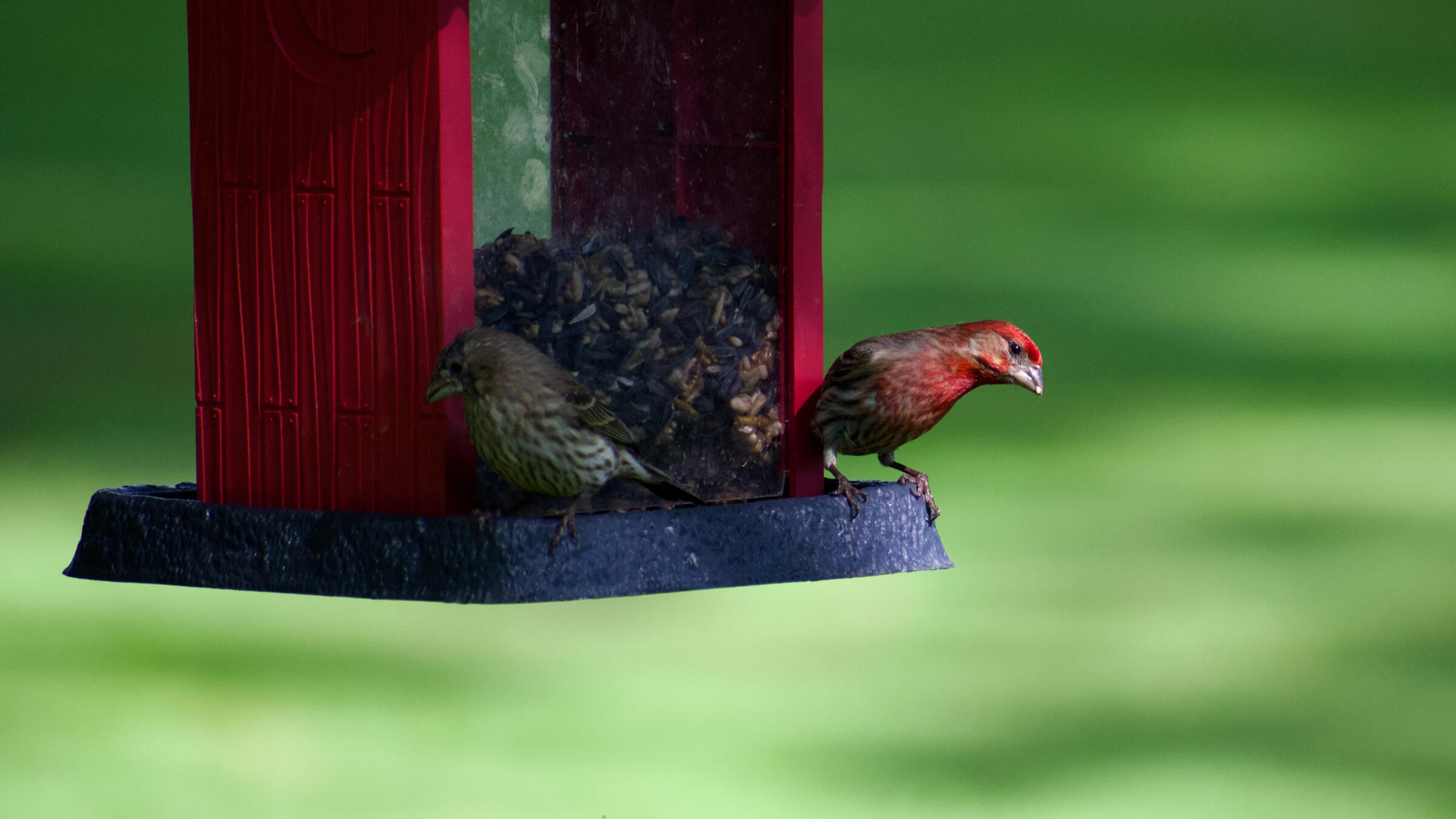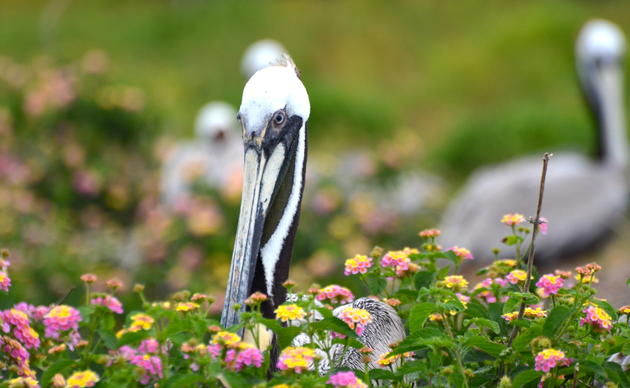Avian Flu Awareness and Safety
Audubon is closely monitoring the spread of avian flu and recommends individuals observe birds in their yards and at birdfeeders. Maintain a safe distance and check regularly with your local, state, or federal wildlife agencies for updated recommendations on birdfeeder management.
General Birdfeeder Safety
- Proactively monitor birds in your yard or at birdfeeders from a safe distance. Do not touch or approach any bird showing signs of illness. Signs of illness include:
- Swimming or walking in circles
- Holding the head or neck unnaturally
- Difficulty flying or tilting the head
- Alert your state or local wildlife agency if you observe sick birds. The Texas Parks and Wildlife Department (TPWD) 24-hour Communications Center (512-389-4848) can assist in investigating potential outbreaks and implementing control measures. By reporting, you help monitor the threat to birds, wildlife, and human health.
- Keep up with local guidelines regarding birdfeeders. If at least one of your local agencies suggests removing birdfeeders, we advise following that guidance. Removing feeders, if recommended, should not significantly impact local bird populations as food sources are generally abundant during this time of year.
- Regularly wash birdfeeders with soap and/or bleach to maintain hygiene, and always wash your hands thoroughly afterward.
Background
Avian Influenza (HPAI H5N1; commonly known as bird flu) has recently raised concerns, with outbreaks affecting both wild and domestic bird populations. The disease can be highly contagious, spreading through direct contact with infected birds, their saliva, feces, or nasal secretions. Wild birds, particularly waterfowl, are often asymptomatic carriers that can spread the virus over long distances.
While the risk to humans remains low, the disease can spread rapidly among birds, potentially harming poultry industries and wildlife. The Centers for Disease Control is watching the situation carefully and working with states to monitor people with animal exposures.
Since the start of 2024, the majority of avian flu cases in the U.S. have been in domestic poultry and cattle. There have also been increasing reports of avian flu in wild birds, particularly waterfowl, raptors, corvids, sparrows, and starlings. For more information on confirmed cases in wild birds, including species and locations, visit the USDA APHIS avian flu tracking page.
Understanding how to help slow the spread of the virus is essential for individuals, especially those living in areas where avian flu is present.
Guidance for Individuals to Slow the Spread
- Avoid Contact with Wild Birds: Never handle wild birds without protective gear, such as gloves, as they can carry the virus. If you have handled birds, wash your hands thoroughly.
- Practice Proper Hygiene: Regularly clean bird baths and feeders, and wear disposable gloves when doing so. Wash hands immediately afterward. Gloves are not a substitute for hand hygiene.
- Secure Poultry Farms: Follow USDA guidance. Poultry farms should implement physical barriers to prevent contact between wild and domestic birds. Clean and disinfect cages and equipment regularly.
- Limit Movement of Birds: Avoid transporting birds between farms or locations, as this can help prevent the virus from spreading.
- Report Sick or Dead Birds: If you notice unusual sickness or death in birds, report it to local authorities immediately. Do not touch the birds. Contact the Texas Parks and Wildlife Department’s 24-hour Communications Center at 512-389-4848 for assistance in investigating potential outbreaks.
- Stay Informed: Keep updated with the latest guidelines from state agencies such as Texas Parks and Wildlife (TPWD) and the Texas Department of Health and Human Services.
Conclusion
While the risk of avian flu to humans remains low, it poses a significant threat to both wild and domestic bird populations, including in Texas. By following recommended precautions, individuals can play a crucial role in helping slow the spread of the disease. Vigilance, reporting sick birds, and practicing good hygiene and biosecurity are key to protecting both human and animal health across the state.
How you can help, right now
Join Audubon Texas Today
Becoming a member supports our local work protecting birds and the places they need.
Consider a Legacy Gift for Texas
Planned gifts and bequests allow you to provide a lasting form of support to Audubon Texas.
Subscribe to Our Newsletter
Subscribe to our newsletter for updates about Audubon Texas's conservation work, and news about our activities and local events.





